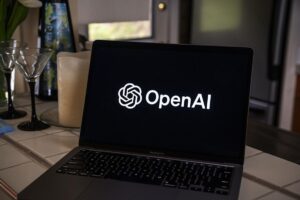What are OpenAI’s true intentions regarding Trump?

OpenAI’s Policy Proposal and the State of AI Regulation
In a recent submission to the White House’s AI Action Plan, OpenAI outlined its vision for the future of artificial intelligence, targeting key regulatory issues that it believes could impact its operations. This proposal highlights the company’s desire for a national framework to mitigate what it sees as competing state laws that could hinder the growth of the AI sector in the United States.
The Core Components of OpenAI’s Proposal
OpenAI’s policy suggestions revolve around several key themes:
- Promoting American AI Dominance: OpenAI urges the use of trade laws to bolster U.S. leadership in AI, particularly in the face of competition from China.
- Loosening Copyright Restrictions: The tech giant advocates for relaxed copyright restrictions regarding training data to help it combat potential threats from international rivals.
- Investment in AI Infrastructure: OpenAI calls for significant investments to strengthen the technological foundation for AI development.
- Regulation Mitigation: The company emphasizes the need to prevent states from introducing a patchwork of regulations that could disadvantage U.S. AI companies.
The Challenge of State-Level Regulation
One of the most prominent concerns highlighted by OpenAI is the growing number of state-level proposals attempting to regulate AI technologies. The sheer volume of AI-related bills has led to contrasting approaches across states, creating a complex regulatory environment. As of early 2025, nearly 900 AI-related bills have been introduced in 48 states, a dramatic increase from the previous year.
Examples of Recent State Bills
The proposed legislation covers various issues, including:
- Political Deception: Bills aim to regulate the use of AI in political campaigns to avoid misinformation.
- Sensitive Content Management: Some proposals address AI-generated content that lacks consent, while others encourage AI use in scrutinizing potentially harmful materials in schools.
- Operational Use in Emergencies: Certain bills propose the deployment of AI tools in managing utilities during natural disasters.
Concerns Over SB 1047
Amid the flurry of legislative action, one bill—California’s SB 1047—stands out. This controversial proposal aimed to impose strict liability and safety regulations on companies developing advanced AI systems. While it received both support and opposition across various sectors, OpenAI took a definitive stance against it, citing potential harm to the industry’s growth.
The Federal Landscape
Despite the urgency for a cohesive national framework to address AI, there is a noticeable absence of federal laws governing the technology. Although there was momentum for two bipartisan AI-related bills, they ultimately did not pass. This lack of federal guidelines leaves a vacuum that states are moving to fill, increasing the risk of disconnect and confusion among different jurisdictions.
The Push for Federal Preemption
OpenAI’s desire for federal preemption stems from the belief that inconsistent regulations across states could create significant challenges for the AI industry. The risks of this regulatory landscape are compounded by fears of national security threats, especially in the context of competition with China. Stakeholders are leveraging these concerns to pressure lawmakers for a more unified approach to AI governance.
The Role of National Security
In their strategy to influence AI regulation, OpenAI and the broader tech industry frequently invoke national security narratives. Emphasizing the potential dangers of China’s advances in AI technology, they argue that a robust U.S. leadership in AI—rooted in democratic principles—can mitigate these risks. This framing resonates with policymakers and the public, making it a crucial part of the discourse surrounding AI development and governance.
By focusing on these themes, OpenAI aims to shape the future of AI regulation in a manner that promotes growth while safeguarding American interests in the global technological landscape.





